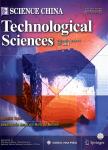Chemical resistance tests on PP-ternary nanocomposite for its application in bioreactor liner fabrication
Chemical resistance tests on PP-ternary nanocomposite for its application in bioreactor liner fabrication作者机构:Nanoscience & Nanotechnology Research Group Department of Biotechnology Engineering Faculty of Engineering International Islamic University Malaysia Department of Mechanical Engineering International Islamic University Malaysia
出 版 物:《Science China(Technological Sciences)》 (中国科学(技术科学英文版))
年 卷 期:2011年第54卷第8期
页 面:2217-2223页
核心收录:
学科分类:08[工学] 0805[工学-材料科学与工程(可授工学、理学学位)] 080502[工学-材料学]
基 金:the Malaysia Ministry of Higher Education (MOHE) for funding this project under FRGS 0206-56
主 题:bioreactor chemical resistance liner material MWCNT melt intercalation polypropylene ternary nanocomposite
摘 要:Continuous usage of bioreactor causes early degradation of most bioreactor liner materials due to the effects of various chemicals, consequently resulting in contamination in the bioprocess. Performance of PP-ternary nanocomposite (PPTN) for its potential application in the fabrication of bioreactor liner material was investigated in this study. The chemical resistance of the composite samples obtained was tested by exposing them to chemicals such as acid, alkaline, water and bacterial solutions, according to ASTM 543-06, and their effects on the composite samples were carefully observed. Specifically, the investigation focused on the changes in the physico-mechanical properties of PPTN following long term of exposure to these chemicals. The results show slight increase in the weight and dimensions of samples in the first few days, followed by constant reading for the period of 4 weeks. The performance in terms of physical properties was in the range of PPTN with 0.61% MWCNT PPTN 0.45% PPTN 0.17%. The maximum percentage change in tensile properties, observed in this study, was approximately 10% against PPTN (0.17%), which indicates stable mechanical properties of the composite and invariably suggests that the nanocomposites could serve as a better alternative for bioreactor liner fabrication.



